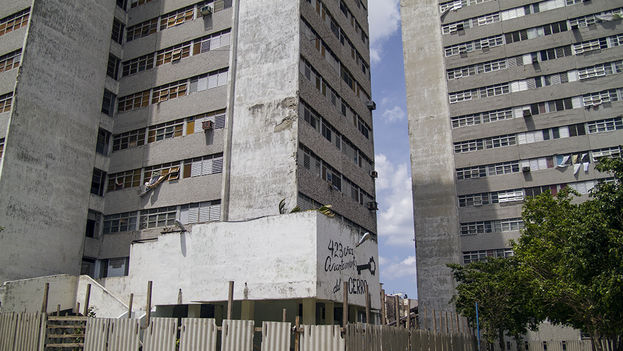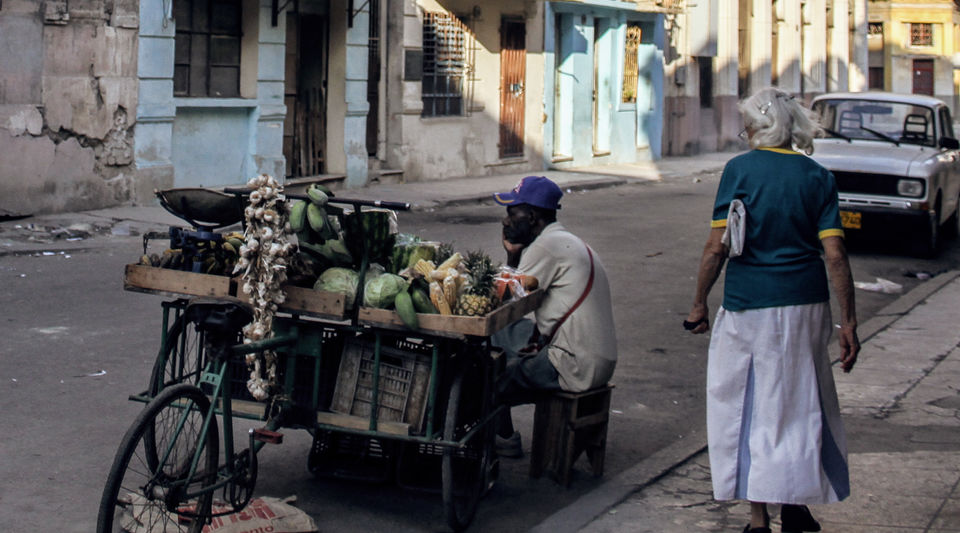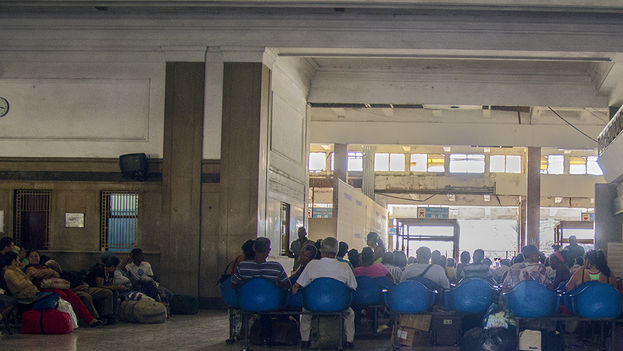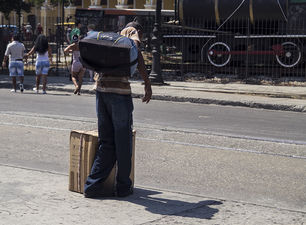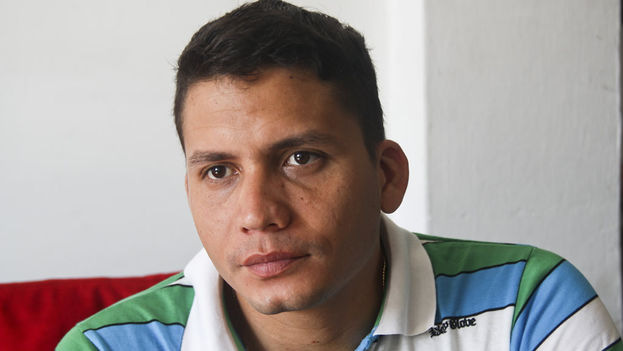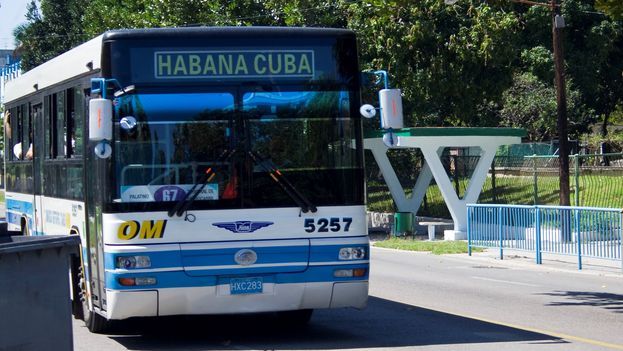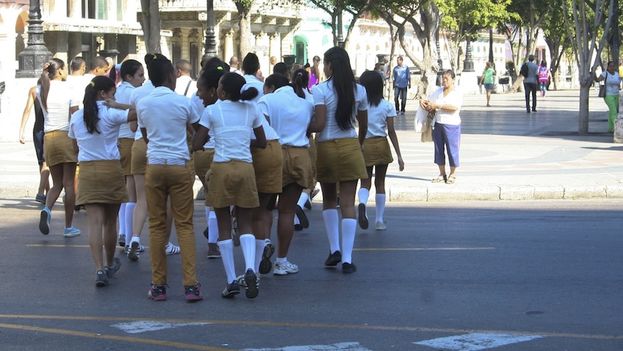Reinaldo Escobar, Havana | May 30, 2014 – Eliécer Ávila launched the website this week of the political movement Somos+ (We Are More), which he created in June 2013. This 29-year-old computer engineer published a letter to young Cubans asking them to participate in “the reconstruction of the country.”
Today we are isolated, and thus we have the idea that we are 11 million people thinking the same thing but not talking to each other about it, because there is neither the necessary confidence nor the platform to serve as a loudspeaker for people to express themselves without fear.
We are aware that in this early stage there will not be many people who want to be part of the movement, but we hope that we can count on a vanguard. We don’t expect to be a mass movement, but we can bring together an important number of responsible and thinking young people around a project for Cuba. We believe that it’s not enough to describe and criticize problems, we have to go from complaints to active participation and this participation implies that we need to organize ourselves. continue reading
Q: This has been a significant step in the evolution of your activism. At what point did you decide to found Somos+?
A. In February 2007 a video released on alternative sites showed a discussion I had with Ricardo Alarcón, then president of the National Assembly of People’s Power. From that moment hundreds or thousands of people from across the country approached me.
I noticed that people had huge cravings, cumulative desires, to share ideas, and that there was an enormous overlap in these ideas. I heard very similar things in Guantanamo, Camaguey and Pinar del Río. Then, in the same way that a businessman identifies what is called “market niches,” a politician or an aspiring politician should know how to find the missing link in a certain chain that will make things start to happen.
What we lack are platforms where the greatest possible number of Cubans can come together to talk; for example there are 20,000 of us who support the urgent need to give Cubans open access to the Internet.
“It’s not enough to describe or criticize the problems, we have to shift from complaining to active participation.”
Q. Throughout this half century there have been many initiatives to create political platforms. What differentiates Somos+ from what has happened so far? Is it about continuity or rejection?
A. We can’t ignore these organizations, many of them very respectable like the Varela Project that collected more than 11,000 signatures and presented them to the Parliament. There are precedents in the history of the Cuban opposition that have been developed by talented, serious, hard-working people. All these initiatives deserve respect. But everyone can come up with his own, named, initiative, something with his own history specific to the time the project is undertaken.
Q. One of the issues most discussed currently among the opposition is that of unity. Do you think creating a new movement contributes to or hurts this aspiration?
A. In order to join forces there have to be forces and I think that everyone, on their part, can capitalize on all the energies in their group, and in their generation and this is also a way that in the end we’ll have more forces to unite.
Q. It’s almost inevitable that a political movement is labeled based on classifying it among the known political leanings. Left, center, right, social democrat, liberal, Christian democrat, etc. What do you think would be the label most acceptable to Somos+?
A. The issue of labels, although to our regret it still exists, in the long term will be seen as a remnant of the 20th century. I have the impression that one of hallmarks of the 21st century with regards to political conceptions, will be overcoming the burden of political labels. On some issues we may have opinions leaning to the right, and on others to the left. So those who feel obliged to define us using these old classification tools will have to settle with placing us in the center.
We’re not unaware of the importance of the free market, but we observe with close attention that there has to be social justice. The different tendencies can be expressed like the legs of a table which, when everyone has the same freedom of action, we have to find social equilibrium.
With the Somos+ movement there will never be a single idea. We are open to people who are members of the Communist Party or who have openly declared themselves to the right or left. We want to bring together those who believe in clear goals. There could be many Communists here who are in agreement with us that we need a greater degree of participation, that we lack a democratic parliament, that Cuba needs to be inserted once and for all into the technological globalization to be present in the world. We will not refuse anyone the right to participate because they have a different ideological viewpoint.
“A good strategy for making progress in this field as turbulent as this is to pay less attention to what the adversaries say”
Q. What does a person have to do to join the Somos+ movement? Do you include Cubans living outside the island?
A. We are going to take our ideas everywhere. Already in eight provinces we have been invited to give conferences on the subject. It’s about young people who are eager to do something and don’t know how. Friends, family, neighbors who get together.
Among the founding documents that are posted on our website there is a summary of our ideas and principles, and also a Letter to Young People where I explain our motivation. We have included a form that people can fill out with their particulars, both those living on the Island and those who live anywhere else in the world, provided they share the objectives of our movement.
Q. Presumably that now attacks will come. From official institutions that will accuse you of being another mercenary of the empire and from sectors of the opposition that will say that your movement is a maneuver by Raúl Castro to make people believe he is democratizing. What answers do you have for one or the other?
A. A good strategy for advancement in this very turbulent field is to dedicate less attention to what your adversaries say and more attention to communicating with people. That is what we are going to spend 99.99% of our time on, regardless of what extremists from either sector say.
Q. I’d like it if you would get ahead here of the one question you are going to be asked from all directions and with the worst intentions. How is the movement financed?
A. The members of the movement will make voluntary contributions to help defray costs. That is reflected in our bylaws. It’s impossible to do what we want to do without resources and it would be very irresponsible to try to do it without stable economic support. Our finances will be public and we will prepare a report so our accounts can be audited.
If you sell a pig and you want to bring a part of the profit to our movement you can do so, like Christians do in their churches to maintain the church. This movement is our faith.
Implicit in the bylaws is that any natural or legal person can make donations as long as they comply with certain principles: that the money does not come from illicit sources, that they are not trying to influence the politics of the movement with a donation, that they haven’t participated in violent acts. We don’t believe that the enemy of our adversary is necessarily our friend. We would love to have a public debate with the Communist Party on the topic of how to finance a political organization.
Q. One last question that someone asked Fidel Castro in 1954, when he was your age: Do you plan, at some point, to perpetuate yourself in power if you achieve your purpose?
A. We won’t leave for tomorrow the issue of handover of positions. Internally we have elections and this will be a habit we will continue. I personally disagree with any initiative that can lead to a person remaining in power. The 1940 Cuban constitutions addresses this with great clarity.

